The Land Of China -- Explore by Province
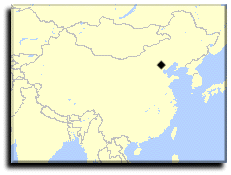 |
 |
Beijing
Welcome to Beijing, the capital city of China! The world-renown city has a history of over 3000 years, and situated in the northeast, it is home to over 12 million people.
Beijing is centered around two farmous landmarks: Tiananmen Square and the Forbidden City.
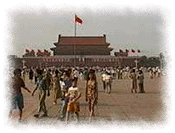
|
Tiananmen Square, with an area of 98 acres and a capacity of up to one million people, is the world's largest public square. It was originally designed in 1651 and cemented and quadrupled in size in 1958. In the center is Mao's Memorial Hall and the Monument to the People's Heroes, where on national days China's leaders stand to review the parades and festivities. It is also surrounded by other famous places: the Museum of the Chinese Revolution and Chinese History to the east; the impressive Qianmen Gate to the south; the Great Hall of the People, seat to China's congress, to the west; and the Tiananmen Gate (Gate of Heavenly Peace) to the north, from whose balcony the imperial edicts were read in ancient times.
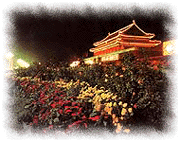
|
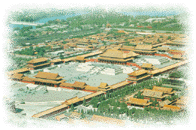
|
A Tang Dynasty poet wrote about the royal palace of his time: "Without seeing the magnificence of the royal palace, one can never sense the dignity of the emperor."
Magnificent and awe-inspiring, that is how every visitor would describe the Forbidden City, which served as the seat of imperial power during the Ming and Qing dynasties (1368-1911). Every year, millions of Chinese and foreigners throng to the huge palace grounds to see the treasures and precious objects as well as the power, splendor, abundance, and extravagance of former emperors.
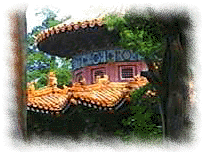
|
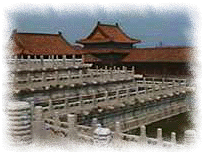
|
There are many other places worth visiting in Beijing:
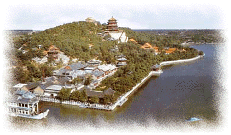
|
Yi He Yuan, or the Summer Palace, lies in a northwestern suburb of Beijing. This is one of the largest and best preserved imperial Chinese gardens. With a concentration of the best ancient buildings as well as styles of gardening, it is an outstanding example of classical Chinese gardening and landscaping. Man-made Kunming Lake, Longevity Hill, and man-made hills as well as halls, pavilions and temples blend harmoniously together in the Summer Palace inspite of their individual styles.
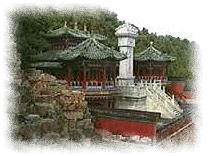
|
The emperor of the Jin Dynasty laid out the foundation stone in 1153 as well as the Garden of the Golden Water. During the coming eras, the garden and lake were again enlarged and deepened. Under the Qianlong Emperor, large-scale work was done, and the park was made its present size of 1.5 million square meters. Three-fourths of it are taken up by Kunming Lake. Since the Qianlong period, the garden has been called Garden of Clear Ripples, yet as the imperial family spent most of the hot summer months at the palace, it was soon called the Summer Palace.
The Temple of Heaven
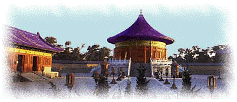
|
The Temple of Heaven is located in the southeastern part of Beijing, about 2 kilometers southeast of the Forbidden City. This compound is one of the largest parks in the city, covering 1.44 million square meters, two times the size of the Forbidden City. It is an outstanding representative of Chinese traditional architecture for its clever design and harmonious colors. Emperors of the Ming and Qin dynasties came here to pray for a good harvest in spring and for rain in summer as well as to offer sacrifices to the heavens in winter.
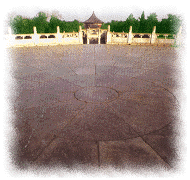
|
Each year in his capacity as the Tianzi, or the Son of Heaven, the emperor came to the temple at the time of the winter solstice to pray for a good harvest and to render homage to the heavens. This tradition lived until the fall of the dynasties in 1911. Yuan Shikai was the last emperor to hold a ceremony in the temple in 1913.
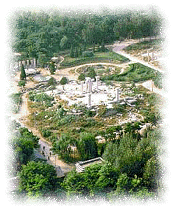
|
The Yuanming Garden lies on the northwestern outskirts of the city, north of Beijing University and only 500 meters from the Summer Palace. It was built during the Qing Dynasty over a period of 150 years and included three gardens: Yuanming Yuan (the Garden of Perfect Splendor), Changchun Yuan (the Garden of Eternal Spring), and Qichun Yuan (the Garden of Gorgeous Spring). They were laid out seperately, yet in a way that they complement each other harmoniously. The peaks of the Western hills formed the background, while the hills and lakes were man-made. Countless springs flowed, feeding small canals as they wound their way through lovely valleys. White marble bridges spanned the water here and there. Palaces, halls, pavillions, and temples stood amidst emerald green woods and were linked by covered walkways. It was referred to as the "Garden of Gardens," since it displayed a combination of different styles, both Chinese and Western.
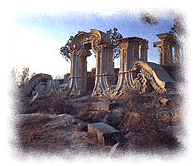
|
The Lama Temple
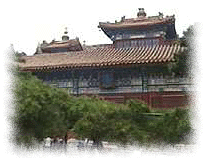
|
The Lama Temple (Lamasery of Harmony and Peace) , one of the best preserved temples in Beijing, is a famous attraction in the city. It is a Mongolian-Tibetan yellow-sect temple with many unique figures, the largest being 18 meters high, carved from single pieces of sandalwood from Tibet. This complex, dating back to 1694, used to be the palace in which the son and successor of the Kangxi Emperor lived. It was converted into a lamasery in 1744. The Lama Temple, built on a north-south axis, has been preserved until today and still houses a small group of Lamaist monks, young and old, who manage the complex. It is divided into five important halls: the Hall of the Celestial Guardians, the Yonghe Gong Dian, the Yongyou Dian, the Hall of the Dharma Wheel, and the Tower of Infinite Happiness.
The Ming Tombs
The Thirteen Ming Tombs are located in hills 50 kilometers northwest of Beijing. Construction of the tombs started in 1409 and ended with the fall of the Ming Dynasty in 1644. In over 200 years, the tombs were built over an area of 40 square kilometers that is surrounded by walls. Each tomb is located at the foot of a separate hill and and is linked with the other tombs by a road called the Sacred Way.

|
Thirteen of the sixteen Ming emperors and their wives and second wives are buried here. Two of them are now open to visitors.
Tai Ye Chi and Beihai Park
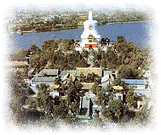
|
On the west side of the Forbidden City is a wide expanse of water called Tai Ye Chi. Tai Ye Chi is divided into three parts: Zhonghai Lake in the middle, Nanhai Lake in the south, and world-renown Beihai Lake in the north, which was turned into a royal garden. The designs of the three lakes can be traced back to an ancient legend, which says that there were three celestial mountains in the Beihai Sea inhabited by immortals. Rulers took to constructing these "celestial mountains" on the water space just outside the royal palace, turing legend into reality.
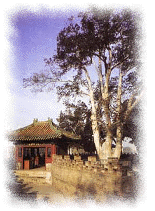
|
Beihai Park is the world's earliest royal garden, for its history goes back more than 800 years. In the 10th century, an imperial residence was built here. When Beijing became the capital of the Yuan Dynasty, the first Yuan emperor, Kublai Khan, had the park splendidly designed. The large, picturesque stones on the park grounds were brought here from the Imperial Garden of the Northern Song Capital, Kaifeng.
Main attractions in the Beihai Park are the Round City, Jade Flower Island, White Pagoda, Wanfo Lou Tower, Nine-Dragon Wall , Iron Screen, Xiao Xitian Pavilion, and Chengguang Dian as well as other interesting sites.
Other attractions in Beijing are: the Great Wall of China, the White Pagoda Temple, the Eight Great Sights of the Western Hills (Chang'an Temple, Lingguang Temple, Sanshang Nunnery, Dabei Temple, Dragon King Hall, Xiangjie Temple, Pearl Cave, and Zhenguo Temple) , Fragrant Hills Park, the Temple of the Sleeping Buddha, Cherry Vale, Juma River, Longqing Gorge, Reed Gully Bridge (Marco Polo Bridge), and Stone Flower Cave.
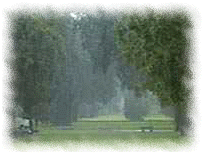
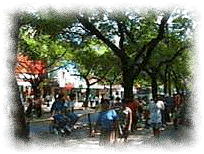



 Chinese Culture
Chinese Culture